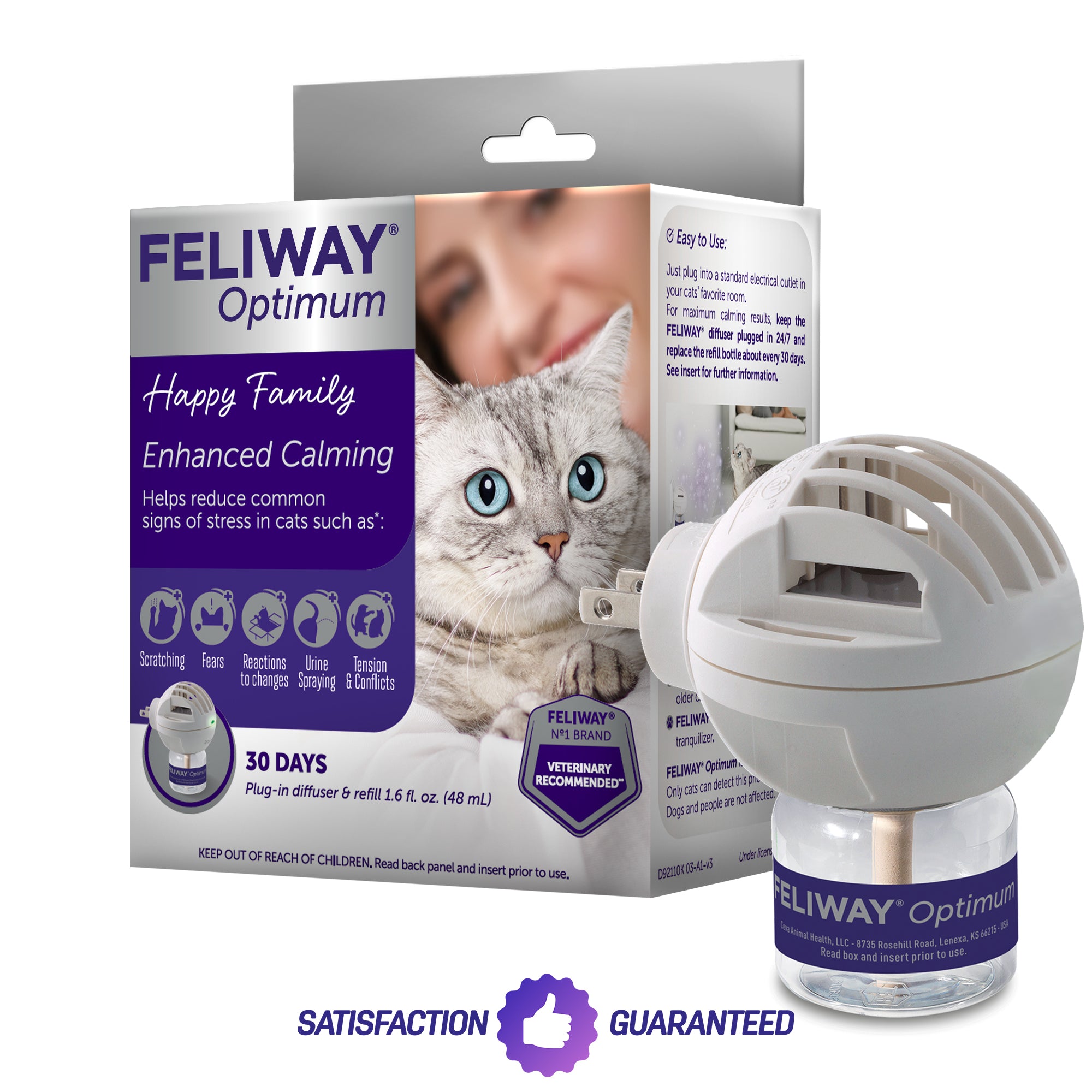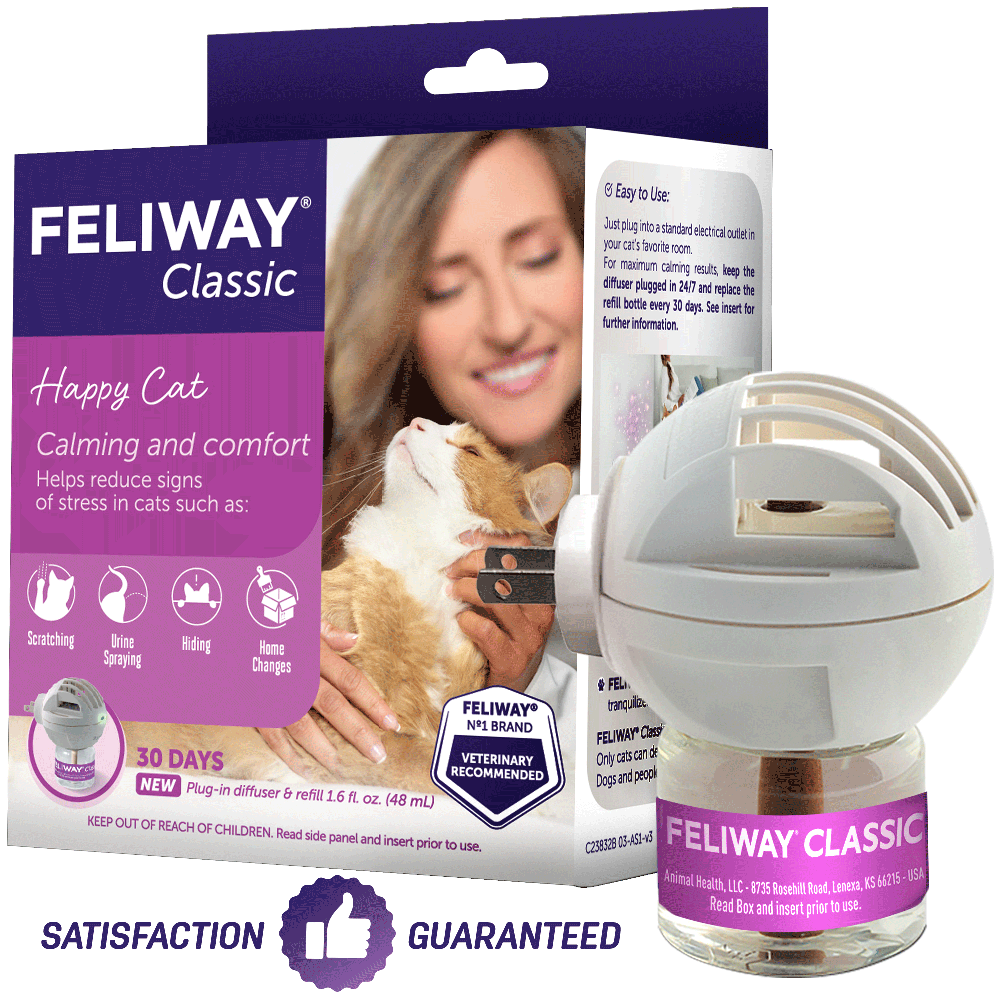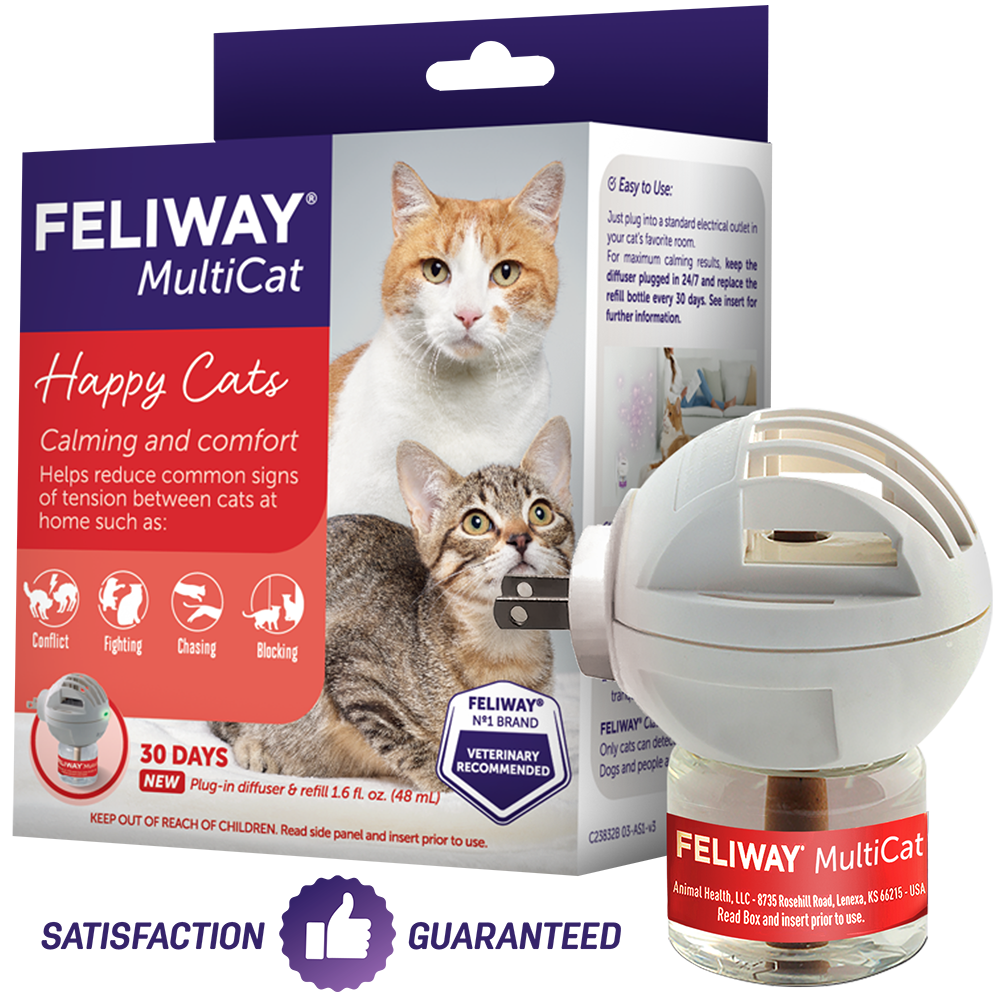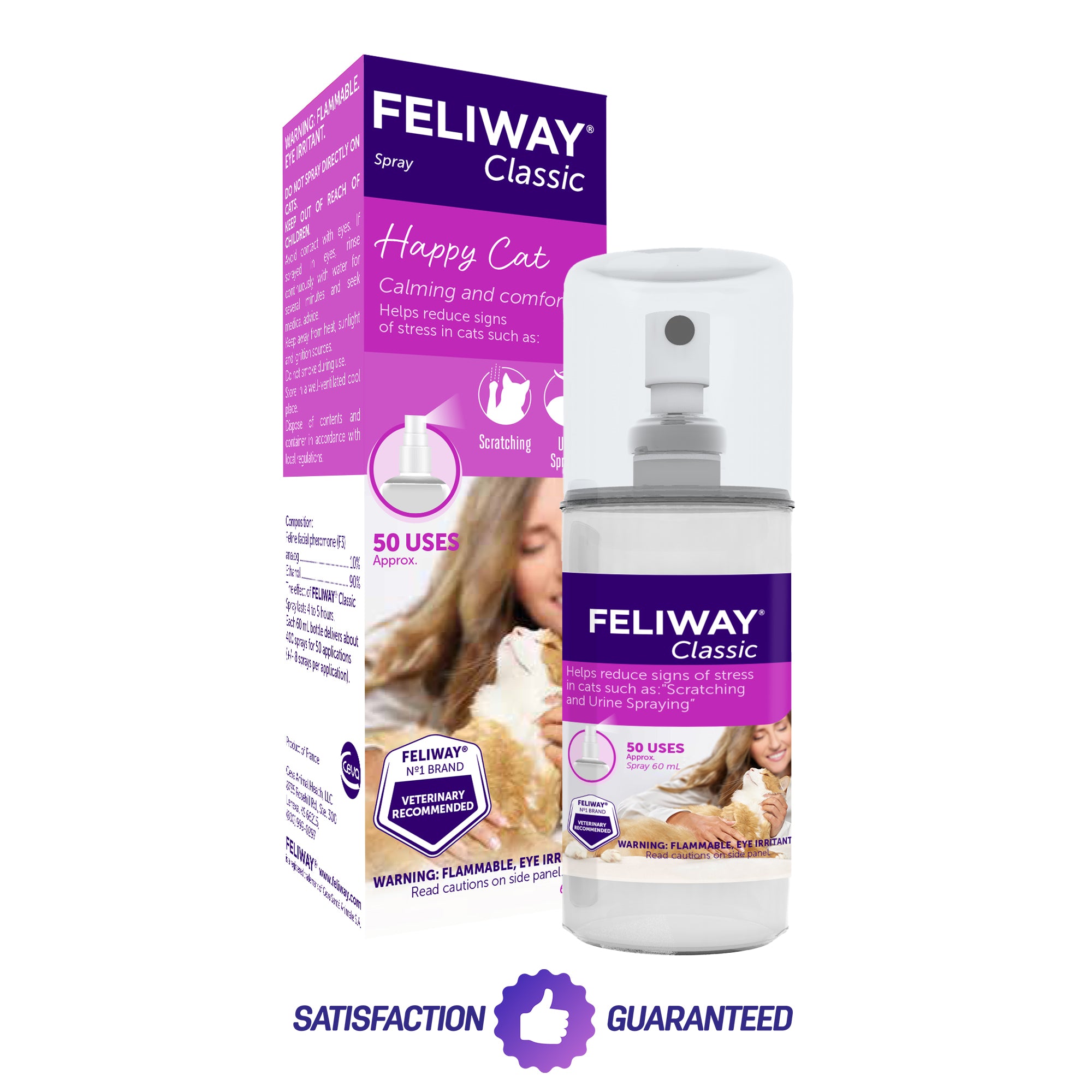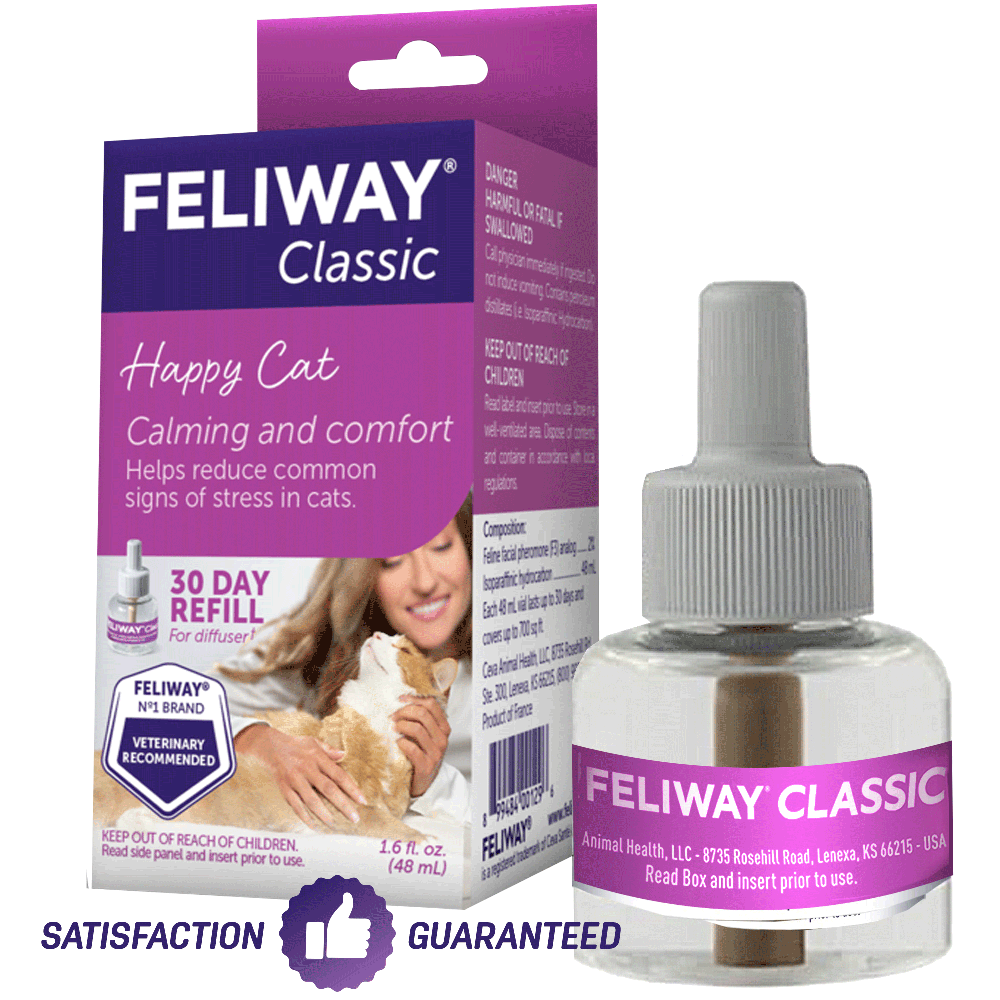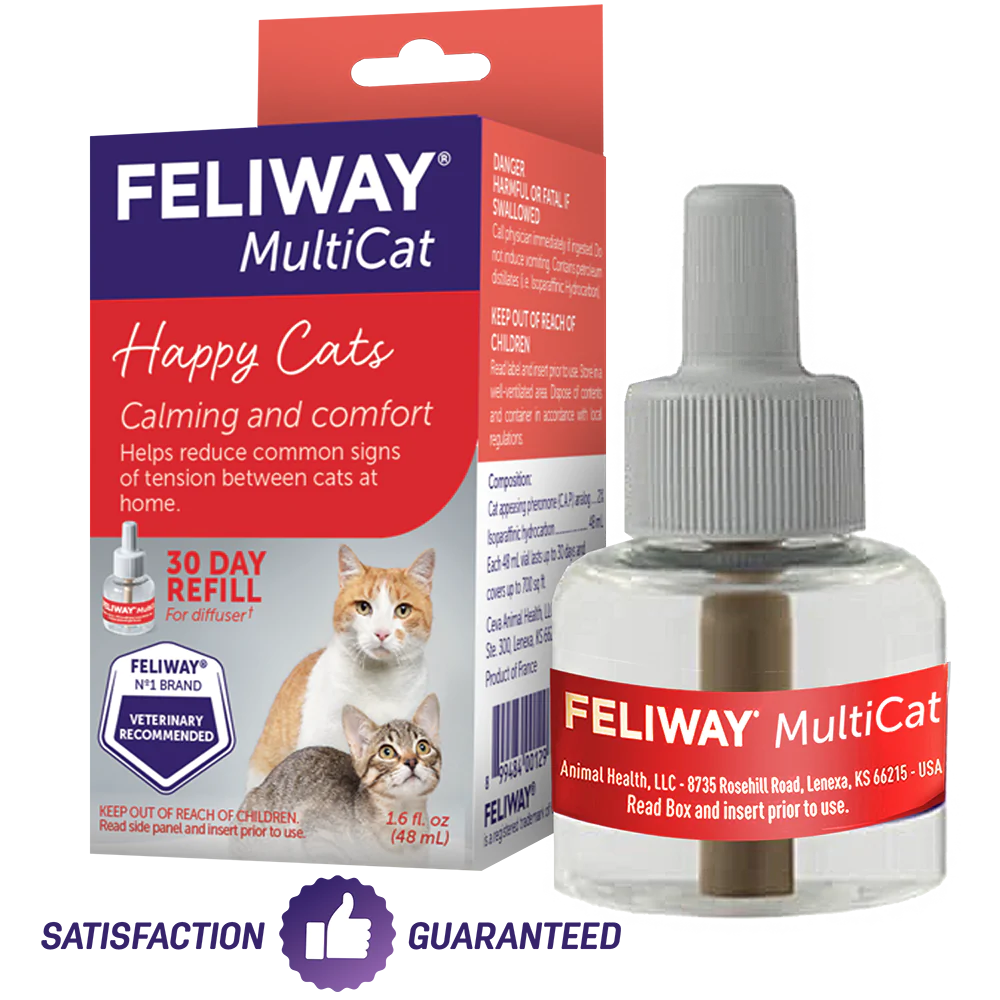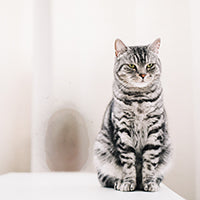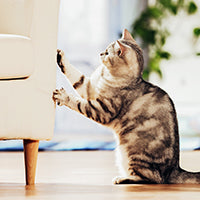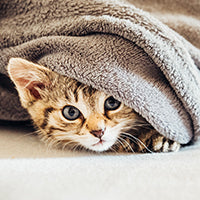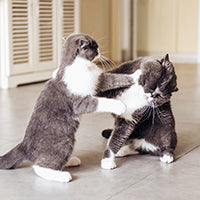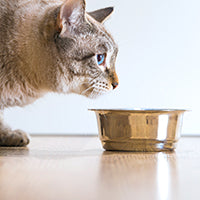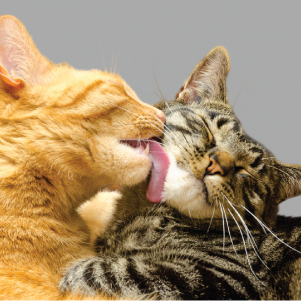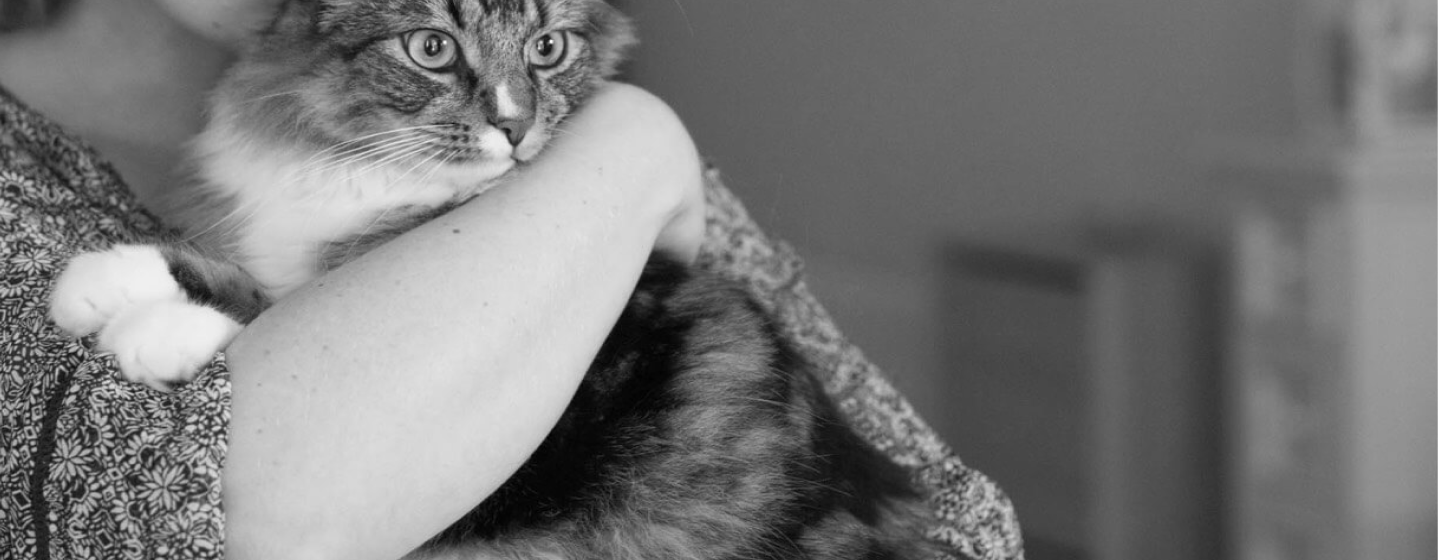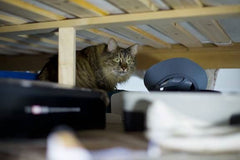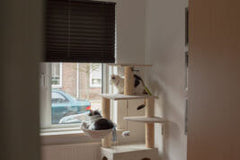Does Your Cat Scratch Your Furniture?
4 Tips to Help Reduce Unwanted Cat Scratching
-
Reduce unwanted cat scratching with FELIWAY® Optimum
- FELIWAY® creates a calming environment by mimicking the natural calming signals that cats produce to create secure surroundings. It’s drug free, scent-free and can’t be detected by humans or other pets
- FELIWAY® sends a message of enhanced serenity which provides reassurance to your cat so they are less likely to scratch inappropriately and mark their territory
- If your cat is scratching inappropriate areas, use the FELIWAY® Optimum diffuser in the room where the unwanted scratching is taking place
- Please Note: All cats are unique. Results may vary depending on the presence of other pets and other environmental factors.
- Buy now to reduce incidents of unwanted scratching in the home
-
Redirect your cat's scratching with FELIWAY® Classic Spray
- Spray the area where your cat scratches with FELIWAY® Classic Spray (after cleaning the area first)
- This leaves reassuring messages so your cat no longer feels the need to scratch in the area
- Place a scratching post near the areas your cat has been scratching to encourage your cat to use the scratching post instead (do NOT spray the scratching post; this would discourage your cat from scratching an appropriate area)
-
Clean all areas scratched by your cat
- With warm water and soap
- This removes the 'territory messages' left by your cat's paws on the object
-
Follow scratching post “golden rules”
- All cats need to scratch, so at least one scratching post (or other appropriate object) per cat is essential
- The post should be sturdy (and not wobble when being used!)
- The post needs to be tall enough, allowing your cat to fully stretch when scratching (at least 90cm tall)
- Place near your cat's sleeping area or close to areas of unwanted scratching
We recommend:
$24.99
-
Seen on TV
-
Recommended by vets
-
1 million+ Facebook likes
-
25+ years of expertise

Which Feliway® Product is Right for My Cat?
Take The Quiz
Frequently asked questions:
FREQUENTLY ASKED QUESTIONS - CAT SCRATCHING
Find quick, expert-backed answers to the most common questions about FELIWAY, cat behavior, and how to create a stress-free environment for your feline friend.
WHY DO CATS SCRATCH?
Scratching is a natural need for all cats. When scratching, they mark their territory. This territory marking is both visible (the scratched lines) and invisible! Indeed, cats leave “territory messages” coming from their paws, that only other cats can perceive.
When cats are uncomfortable they will scratch more, and this can become an issue if this happens on your sofa, walls, doors or other furniture! To learn more, read this article.
In many cases, scratching in your home is in fact your cat’s way of coping with something stressful. It is particularly true for kitten and newly adopted cats, who are discovering their new home.
HOW CAN YOU TELL IF YOUR CAT'S SCRATCHING IS RELATED TO STRESS?
- Your cat is scratching in many areas in the house (on furniture, sofa, chairs...)
- Your cat is scratching near windows and doors
- You have 2 or more cats
- There are many cats in the neighborhood (other cats living close to your home)
- There have been recent changes in your home (like new furniture or moving furniture around)
HOW DO I STOP MY CAT FROM SCRATCHING THE SOFA OR FURNITURE?
If your cat has decided to make your sofa its scratching post, start by cleaning the areas that have been scratched with warm water and soap to remove the scent marks your cat has left. These scent marks bring your cat back to scratch the area again! So washing the area removes the scent marks. If possible, cover the scratched areas to remove the visual reminder too!
Next, make sure you provide your cat with their own scratching post in a strategic location, next to where they sleep, for example. Cats love to stretch when they wake up, so make the most of it!
Finally, plugging in a FELIWAY® Optimum diffuser helps to recreate a calm, soothing and reassuring atmosphere in your home, to help reduce your cat's unwanted scratching. For localized scratching, use FELIWAY® Classic Spray, sprayed onto the scratched area after cleaning it thoroughly. Never spray FELIWAY® Classic Spray on the scratching post as this will deter your cat from using it!
Please Note: All cats are unique. Results may vary depending on the presence of other pets and other environmental factors.
SHOULD I TRIM MY CAT'S NAILS?
Cats are generally able to maintain their claws effectively when they have something to scratch. When nails are not maintained, they can become a problem for your cat.
In order to maintain their nails, cats may scratch cardboard, rope, or scratching posts / pads (both vertical and horizontal options are suggested).
If your cat is not interested in a scratching post, offer them another option and consider changing the location. Check out our article on caring for cats' claws for more information.
WHY DO CATS SCRATCH AROUND THEIR FOOD?
While there’s a lot of conjecture on the web about why cats scratch around their food, there’s actually been very little research around the subject!
If your cat is scratching around their food, this could be a part of their natural instincts inherited from their wild ancestors. For instance, caching is a behavior in which a cat might hide any leftover food from predators and competitors. Alternatively, they might be trying to keep their food area clean or mask the scent of food. Or perhaps they just aren’t a fan of their dinner? We simply don’t know!
If your cat regularly scratches around their food as part of their regular routine, this isn’t a problem. If it’s a sudden or change in behavior, however, you should try to understand the reason. This could be the result of a change in their food, feeding location, or daily routine – or it could be down to an underlying medical issue.
IS A SCRATCH FROM MY CAT DANGEROUS?
As anyone who’s fallen victim to a cat scratch can attest, they can certainly be painful and cause bleeding and swelling. Fortunately, if treated properly, a cat scratch is unlikely to cause a further problem.
This being said, a cat’s claws can harbor various bacteria and pathogens, making even a minor scratch potentially harmful if not properly cleaned and cared for. This includes the risk of cat scratch fever caused by the bacteria Bartonella henselae. To minimize risks, it’s important to clean any cat scratches immediately with soap and water, remembering to rinse thoroughly, and monitor for any signs of infection. These signs can include increased pain and swelling, an increased area of redness around the wound, and other symptoms such as fever or headache. It can sometimes take a few days for signs to develop, so be sure to monitor the scratch for any changes. Seeking medical advice as soon as possible is advisable if any infection symptoms develop.
As another note, your cat mustn’t be allowed to lick any scratches or wounds.
IS SCRATCHING FURNITURE DANGEROUS FOR MY CAT?
When it comes to a cat scratching furniture, this behavior isn’t inherently dangerous for cats, but it could pose indirect risks. For example, it may be possible for sharp objects or splinters from damaged furniture to cause an injury. Habitual furniture scratching can also be a sign a cat is stressed or experiencing discomfort. In these situations, a FELIWAY® Optimum diffuser is an effective for reassuring your cat and reducing this behavior. Another explanation may simply be that your cat doesn’t have an appropriate scratching object available to them, so be sure to invest in a scratching post or pad!
DOES TRIMMING MY CAT’S NAILS HELP WITH SCRATCHING?
Trimming a cat’s nails may help to reduce any damage caused to furniture, but this won’t stop your cat from actually scratching. Rather than trimming your cat’s nails, a better solution is to provide somewhere suitable for your cat to scratch, such as with a scratching post, tree, or pad.
Of course, sometimes it is necessary to trim a cat’s nails. For instance, older cats may not always be able to maintain their nails themselves. In these situations, it’s important to maintain proper trimming techniques to avoid cutting the quick, which can cause pain and bleeding.
Where a cat is scratching excessively or habitually, we recommend using FELIWAY® Optimum to relieve stress in the home. You should also seek professional advice from a veterinarian in case of any underlying medical issues.
DOES FELIWAY® STOP CATS SCRATCHING FURNITURE?
FELIWAY® diffusers – including FELIWAY® Optimum – can help reduce furniture scratching in cats. FELIWAY® Optimum releases “serenity messages” that decrease a cat’s stress levels, helping them to no longer feel the need to scratch inappropriately and mark their territory.
